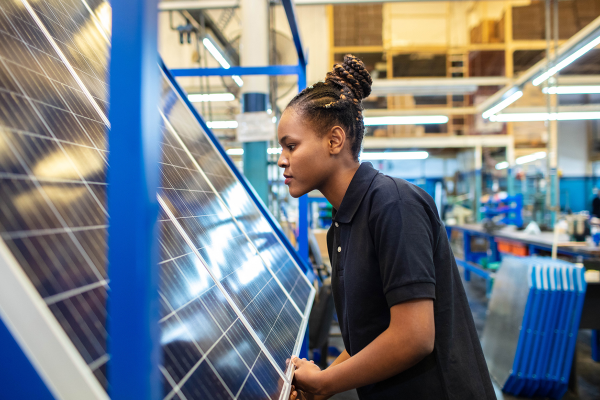Clean technologies will play a critical role in helping Canada meet its environmental and economic goals in the coming years. To support the growth of clean technologies (‘cleantech’), and the companies that design or manufacture them, Canada must use every available tool in its toolbox, including leveraging the procurement capacity of the federal government. As the single largest buyer of goods and services in the country, the federal government is an important economic actor with the ability to send strong market signals. Federal cleantech procurement can help companies find their first customer, can help validate cleantech, ease their diffusion in the market, and can eventually lead to the growth of innovative cleantech.
With the objective of understanding ways in which federal procurement practices can be adapted to increase cleantech procurement, this report evaluates the rules and regulations, policy actors, and processes that define Canada’s federal procurement ecosystem. This analysis reveals certain systems-level characteristics of the federal procurement system, and identifies specific practice-level, process-centric bottlenecks inhibiting federal cleantech procurement. Lastly, it offers recommendations to overcome the bottlenecks inhibiting federal cleantech procurement.
Owing to its process-centric approach, this report offers a unique perspective on reforming federal procurement. Procurement decisions are made by individual actors within the confines of the processes and structural factors surrounding procurement. Instead of analysing how to incent individual action, this report focuses on how the processes surrounding federal procurement can be optimized, and considers practical ways in which existing federal procurement systems and administrative capacities can be adapted to increase procurement of cleantech and environmentally preferable goods and services. Additionally, the policy solutions featured in this report are not aimed at achieving mass systems change or overhauling the entire procurement system. Instead, this report looks at what changes or policy tweaks can be implemented right away to overcome bottlenecks inhibiting change within federal cleantech procurement purchasing processes in time to support Canada’s 2030 climate targets.
Evaluating the challenges inhibiting federal cleantech procurement is relevant not only for supporting greater uptake of cleantech, but also for drawing lessons that are relevant for procuring innovative, or environmentally preferable goods and services (e.g., low-carbon building materials), and procuring from small and medium size enterprises (SMEs). This is because cleantech procurement marks the intersection of three distinct issues that the federal procurement system grapples with: it requires procurement to favour environmentally preferable goods and services and consider environmental performance that is not currently accounted for; it requires higher participation of small to medium-sized enterprises in federal procurement, since cleantech companies in Canada are disproportionately SMEs; and, it requires procurement be adept at buying novel innovative products, which has historically not been a strength of federal procurement. The combination of these three factors makes this report’s findings and recommendations relevant to the discussion on green and innovative procurement, as well as greater SME participation in federal procurement.
This report puts forward five policy recommendations, which – though they focus on cleantech – would also be useful in advancing procurement of environmentally preferable innovative products in general.
Recommendation 1
Extend current government pilot support programs to offer commercialization assistance to cleantech companies. The federal government has some programs in place to help cleantech companies prototype and test their innovations. Innovative Solutions Canada (ISC), for example, currently buys pre-commercial goods and services and tests them in a real-world setting. However, even when a pilot has successfully been executed and the need is established, there is no direct or standard pathway to commercial contracting for these companies. ISC was explicitly meant to be modelled after the United States’ Small Business Innovation Research (SBIR) program. By incorporating commercialization support as standard practice and setting aside resources to the same, ISC will be better placed to replicate SBIR’s success.
Recommendation 2
Create a buyers group open to adopting cleantech post pilot testing. A buyers group, akin to the Coordinated Access National (CAN) Health Network, can bridge the gap between piloting and commercialization that cleantech companies face. The buyers group should be composed of federal departments and agencies wanting to solve a problem with a cleantech solution, but also interested in testing the technology before committing to a commercial contract. This would create an integrated market of buyers who have the budget and the intention to procure innovative technologies, would allow individual departments share the risk of innovative procurement, and would expedite the procurement process. A potential starting point for the buyers group to identify problems that could be remedied with cleantech solutions would be the 23 line items Public Services and Procurement Canada (PSPC) has identified as accounting for close to 58% of its total carbon footprint.
Recommendation 3
Timely revision of bid language through feedback channels between federal departments that run cleantech piloting programs and procuring departments. A dedicated team which would act as the innovation knowledge center could assist in the timely revision of bid language. The innovation knowledge center would collaborate with ISC, Natural Resources Canada (NRCan), Sustainable Development Technology Canada (SDTC), and other federal actors to learn about cleantech that are available, with an emphasis on technologies with clear use cases that have already had a successful pilot phase with the government (this mandate could later be expanded). It would then translate these learnings into readily usable bid terms and technical specifications to attract innovative cleantech products. Such a circular feedback process will help de-risk innovative procurement by setting up a system whereby procurement officers have the support they need and have access to technical specifications and bid terms to procure clean technologies that have already been successfully piloted in a federal body. It balances the need to be careful with how taxpayer dollars are spent, and the imperative to use procurement as a strategic tool for advancing clean innovation and economic growth.
Recommendation 4
Help cleantech SMEs build capacity to participate in federal procurement. A range of supports including guidance materials, helpdesks, training, bootcamps, and facilitating participation in fairs and events will help provide practical and actionable information on procurement to cleantech companies. These could be delivered through different mediums including through mobile applications, videos, and could be modular, so that cleantech SMEs can pick and choose programs based on what is most relevant to them. Some of these services are currently being provided by Procurement Assistance Canada (PAC), which offers seminars to help SMEs find government procurement opportunities. However, it is worth thinking through how PAC’s support services can be modernized. PAC’s mandate could also be expanded to offer specialized services for innovative SMEs. Companies who specialize in innovation, such as those that develop cleantech, have distinct needs. Cleantech companies’ product offerings often consist of products that do not yet fit in established product categories. Given the economic and strategic relevance of cleantech for Canada, specialized and customized training and advisory services, possibly delivered as concierge services, is justified.
Recommendation 5
Increase industry-focused educational efforts to help cleantech companies better understand government’s procurement needs and processes. There is a lack of training opportunities focused on understanding the complexities of federal procurement, especially for cleantech companies. Organizing formal or informal educational forums such as webinars, workshops, seminars, and cohort/contact/mentor-based learning will help cleantech companies understand the federal government as a customer. Industry organizations, start-up accelerators and incubators, who perceive government as an important buyer for their members, are well placed to help cleantech companies understand their buyer – i.e., the federal government – and think through how their technology and value proposition fits with the buyer’s needs. Additionally, industry organizations can work with PAC, which regularly hosts educational webinars and workshops to help SMEs access public procurement opportunities, to either market these resources to their members or organize PAC sessions specifically aimed at cleantech companies.




